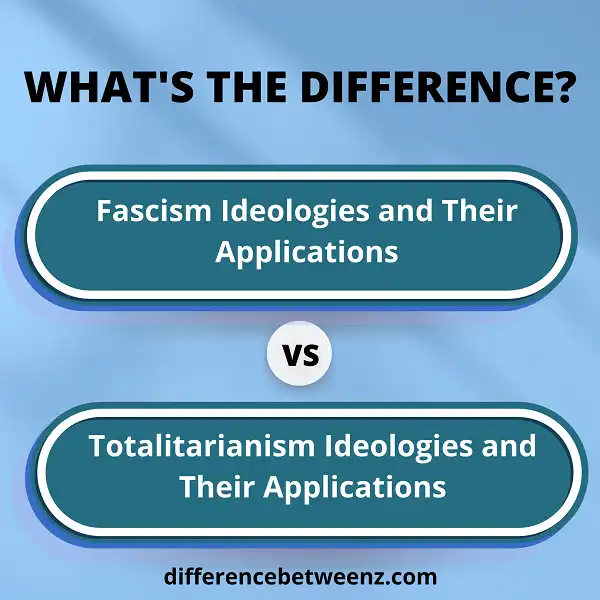Though the two ideologies of fascism and totalitarianism are similar in their oppressive nature, they differ in their target populations. Fascism is most commonly associated with a dictatorship that targets a specific race or nationality, while totalitarianism aims to control all aspects of society, including the economy and the individual. Both ideologies have been used extensively throughout history to justify terrible acts against innocent people. However, it is important to understand the differences between these two oppressive systems in order to create an accurate historical understanding and avoid using these terms interchangeably.
What are Fascism Ideologies and Their Applications?
Fascism is a political ideology that favors dictatorial rule by an authoritarian leader and emphasizes nationalism, xenophobia, and anti-communism. Fascism first emerged in Europe in the early 20th century, and it quickly gained popularity among certain groups who were opposed to the liberal democratic principles that were sweeping the continent. Fascism ultimately came to power in several European nations, most notably Germany and Italy. While Fascism ultimately fell out of favor after World War II, it remains a potent force in some parts of the world today.
- Fascists believe that society is divided into two classes: the ruling elite, who are deserving of power, and the masses, who are not. They also believe that democracy is a weak form of government that cannot effectively deal with the problems facing society. Fascism also generally favors a collectivist economic system, as opposed to the free market capitalism that is favored by many Western democracies. Fascism is often associated with military dictatorship and totalitarianism, as well as aggressive nationalism and xenophobia.
- The Fascism ideology has been applied in a variety of ways throughout history. The most infamous example is Nazi Germany, which was led by Adolf Hitler from 1933-1945. Under Hitler’s rule, Germany became a highly centralized state where individual rights were subordinate to the needs of the state.
- The Nazi government also pursued an aggressive policy of expansionism, culminating in World War II. Fascism has also been evident in more recent conflicts, such as the Bosnian War of the 1990s. In this conflict, Serbian militants sought to create an ethnically pure Greater Serbia through violence and ethnic cleansing.
- While Fascism has often been used as a tool for oppression and violence, there have also been some examples of more benign forms of Fascism. For instance, some environmentalist groups advocate for “eco-fascism,” which calls for strong government action to protect the environment.
Fascism is a complex political ideology with a long history of application in both good and evil ways. It continues to be a relevant force in the world today, making it important for people to understand its principles and applications.
What are Totalitarianism Ideologies and Their Applications?
Totalitarianism is a form of government in which the state holds total authority over the society and its people. Totalitarian regimes typically establish strict controls over people’s lives and seek to monopolize power. Totalitarianism is characterized by a single-party dictatorship, a centralized government, state control over the economy, and forced indoctrination of citizens. Totalitarian regimes often use terror to maintain control. Totalitarianism first emerged in the early 20th century with the rise of communist and fascist states. Totalitarianism still exists today in some countries, such as North Korea.
Difference between Fascism and Totalitarianism Ideologies and Their Applications
- Fascism and totalitarianism are political ideologies that have some similarities, but there are also significant differences between them. Both Fascism and totalitarianism involve a single-party dictatorship, in which the leader of the ruling party controls the government.
- propaganda is used to control the population and quash dissent. Fascism, however, is based on nationalism, while totalitarianism can be based on either nationalism or socialism.
- Fascism also tends to emphasize traditional values and social order, while totalitarianism is more concerned with equality and social engineering. In practice, Fascism has been associated with right-wing regimes such as Nazi Germany, while totalitarianism has been associated with both right-wing and left-wing regimes, such as Stalinist Russia.
Conclusion
The differences between fascism and totalitarianism are important to understand as the two ideologies have been used in different ways throughout history. While fascism is often considered a right-wing movement, totalitarianism can be either left- or right-wing. In practice, there are many similarities between the two ideologies, but they do have some key distinctions. It’s important to understand these differences as we continue to face challenges from both fascist and totalitarian movements around the world.


